I hate waste.
We often talk about nose-to-tail cooking meat, but as an ex-vegetarian, often what we clean away from a vegetable is wasted.
Last spring, while cleaning fava beans, the bag of the pods was much larger than the bowl I had of the tiny fava beans.
I began to do research. In one of my old Italian cookbooks, I found a recipe for using the pea pods and boiling them, then removing the “meat” with a spoon from the pod to create a flan.
That got me thinking about the fava bean pods. Now we have Google and I found many recipes in Greece which actually used the whole fava bean with the pod in recipes.
Often people keep vegetable shavings for flavoring stocks.
But one of the huge wastes to me was always with the artichoke.
In America, we boil the whole huge choke and then just scrape of the edible part of the leaf with our teeth. It always just seemed like a reason to eat mayonaise to me.
Upon moving to Italy, I saw the artichokes sold with their stems on and was totally confused. More to throw away?
NO! more to eat. I learned how to clean and cook the Italian way. The stem of the artichoke is simple more of the heart, the BEST part!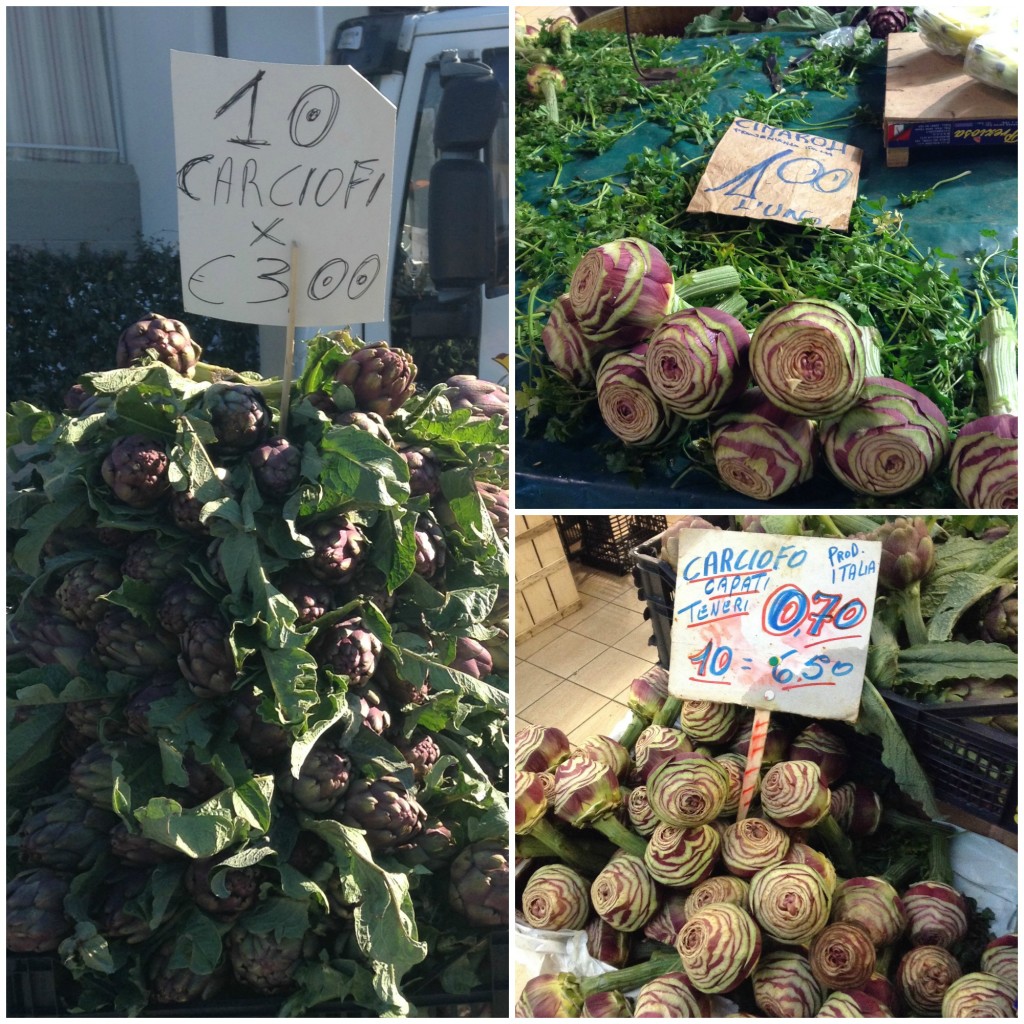
At the local markets near me huge piles of artichokes are sold with their stems. In Rome, they trim the leaves for you, still with the stems, to stew whole, stuffed with mint and garlic. Normally we pull off the tough outer leaves and then cut off the top.
Here is how a Tuscan cuts the artichoke to cook.Remove the tough outside leaves, you will hear when you reach the tender inner leaves, they start to squeek.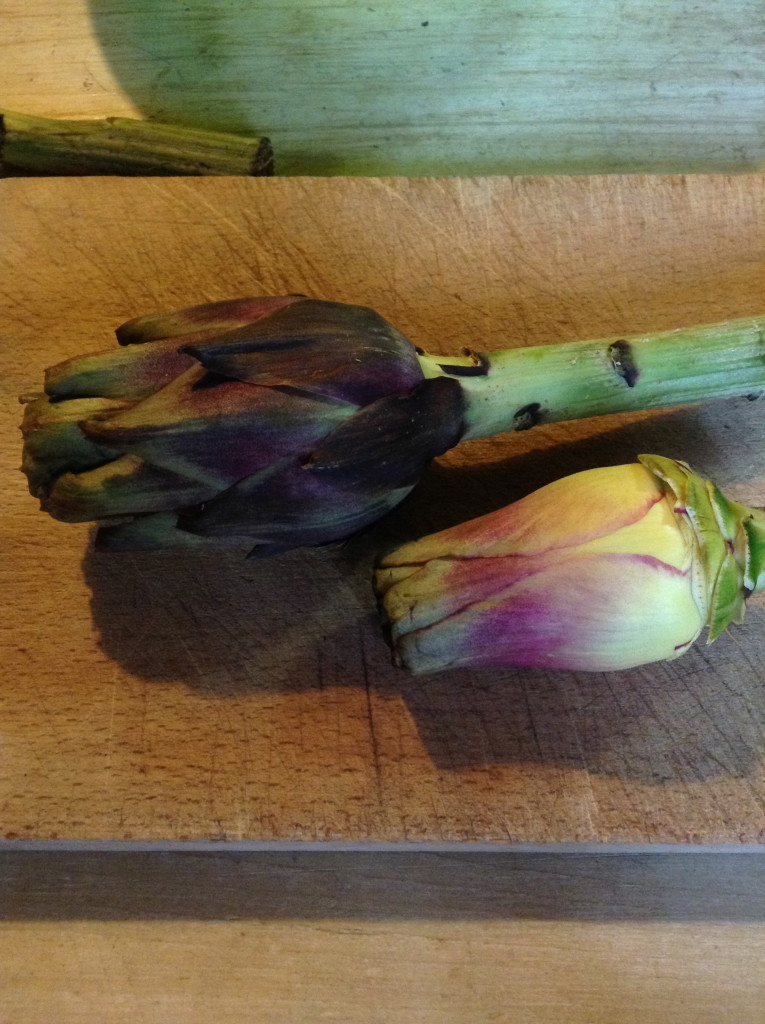
Then cut off the top of the leaf, leaving what would be the artichoke “heart”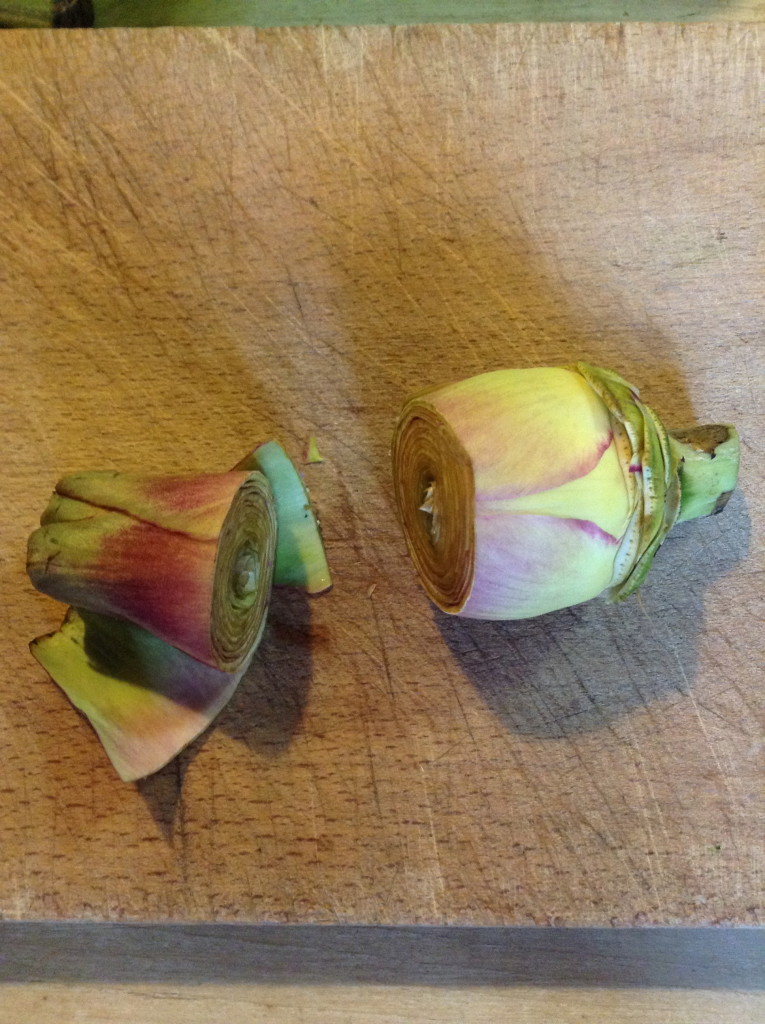
Then “peel” the stalk part, leaving only the tender heart.
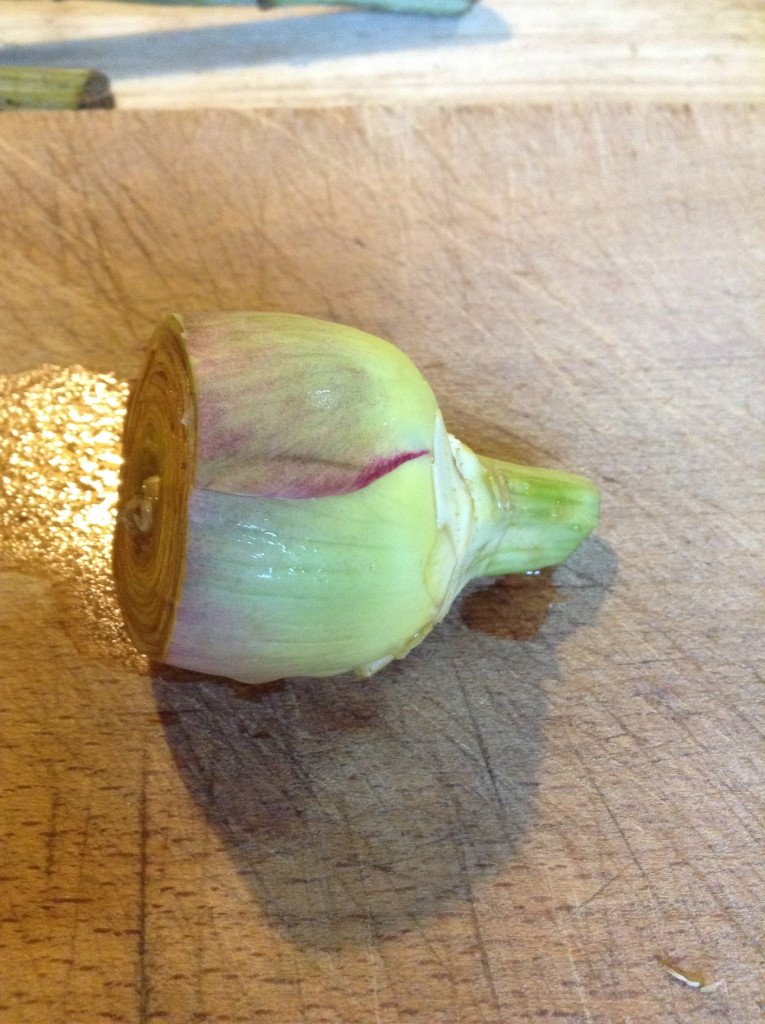
Put the trimmed artichokes in water with lemon juice, so they don’t turn brown. Then get to work on the stalks.
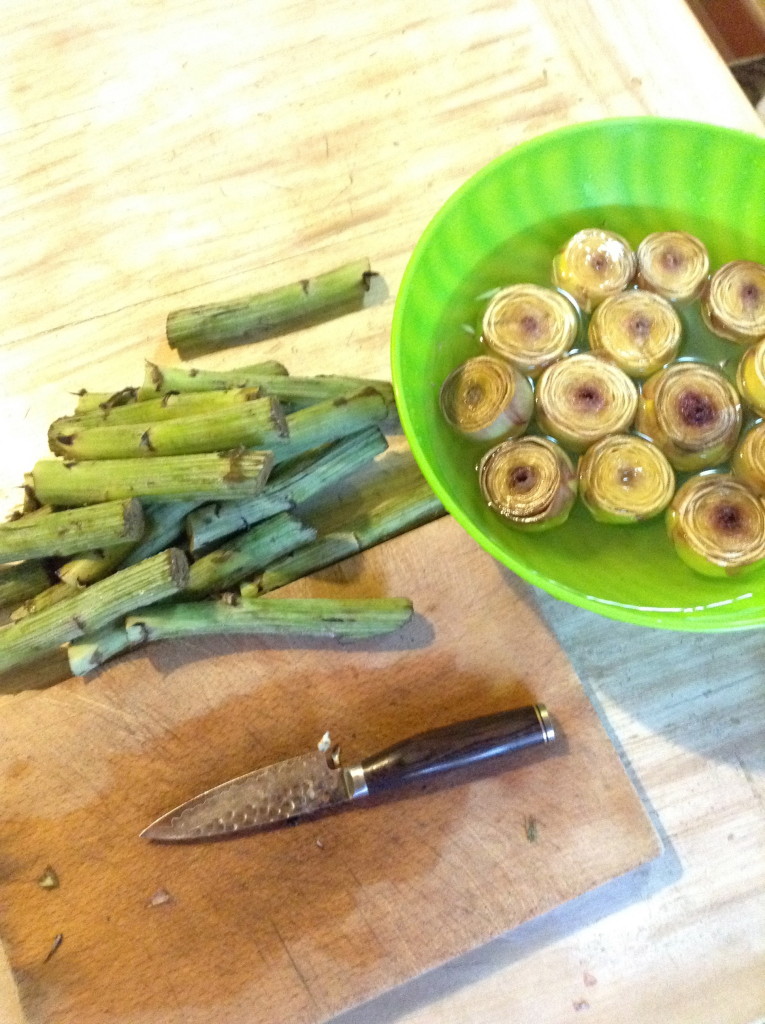
For the stalks, simply peel off the tougher outer part. the rest is all yummy heart.
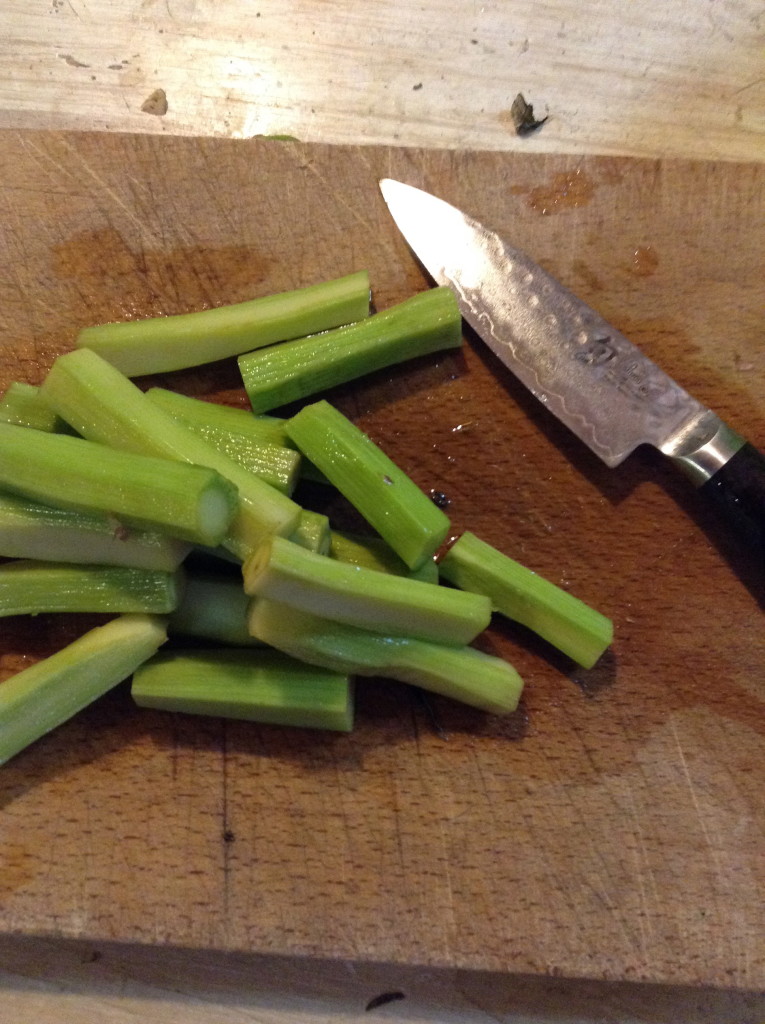
We can simply stew in garlic and olive oil, but I remembered a recipe we made when I worked at the Stanford Court Hotel in San Francisco. Cream of Artichoke Soup, with hazelnuts.
I like to make recipes with vegetables vegetarian so never add chicken stock and not sure how many people keep rice flour, so use a technique I picked up here in Florence from Fabio Picchi. I add potatoes to the soup and then puree.
From a recent trip to Sicily I have ground pistacchios in the house so substituted those for the hazelnuts and it was a huge success.
So this is how new recipes are created, cleaning out the pantry.
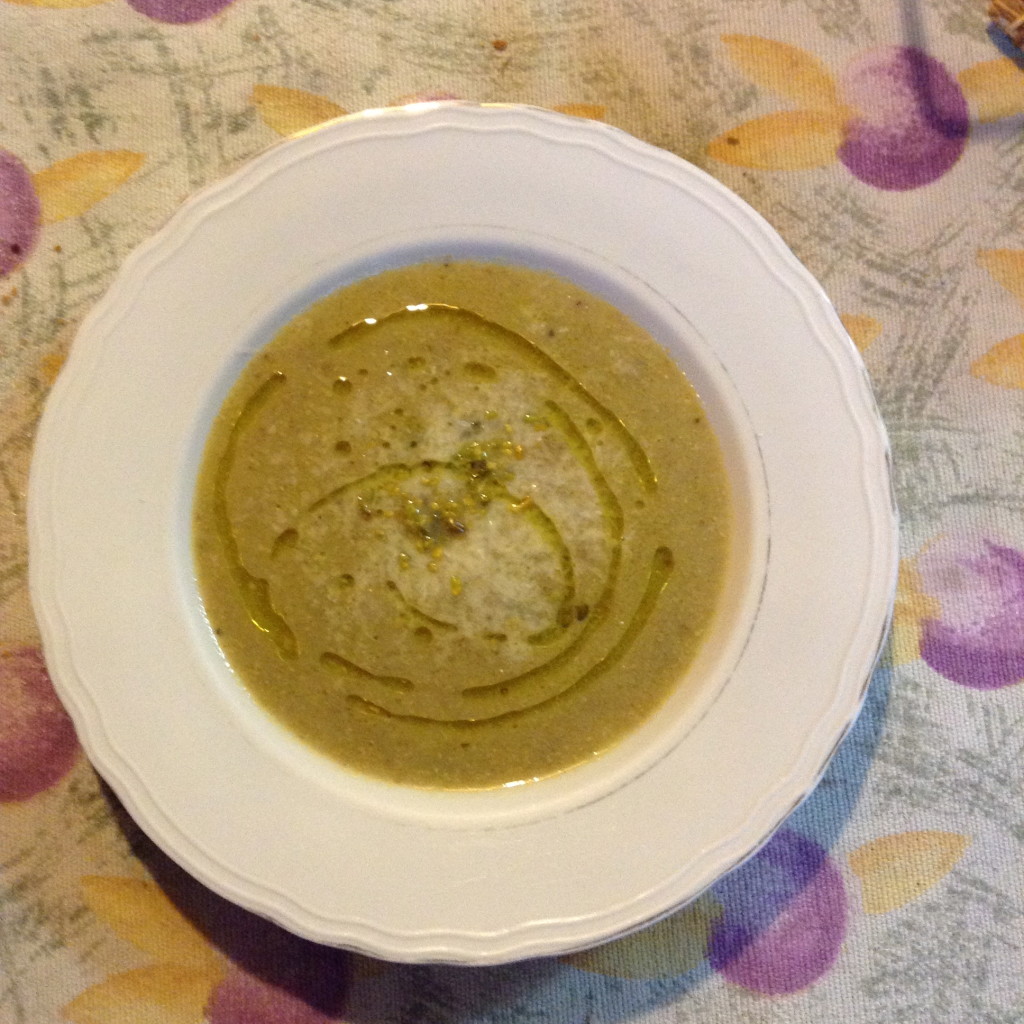
Cream of Artichoke Soup with Pistacchio
Artichoke stalks or hearts( I think you can get bags of frozen hearts)
Potatoes, peeled and cubed
water
salt
olive oil
Ground pistacchios
Chopped pistacchios for garnish
Chop the artichokes and potatoes into small pieces.
Saute in extra virgin olive oil.
Lightly salt.
Cover with several cups of water.
Cook until the potatoes are tender, the artichokes cook faster.
I like to use a immersion blender and puree directly in the pot I cooked the soup in.
Add a few tablespoons of ground pistacchio to thicken and flavor the soup.
Serve garnished with ground pistacchios and a drizzle of extra virgin olive oil.
Top with some grated parmesan cheese if you like.
If you don’t have an immersion blender, I actually used my food mill as my blender was at the school.
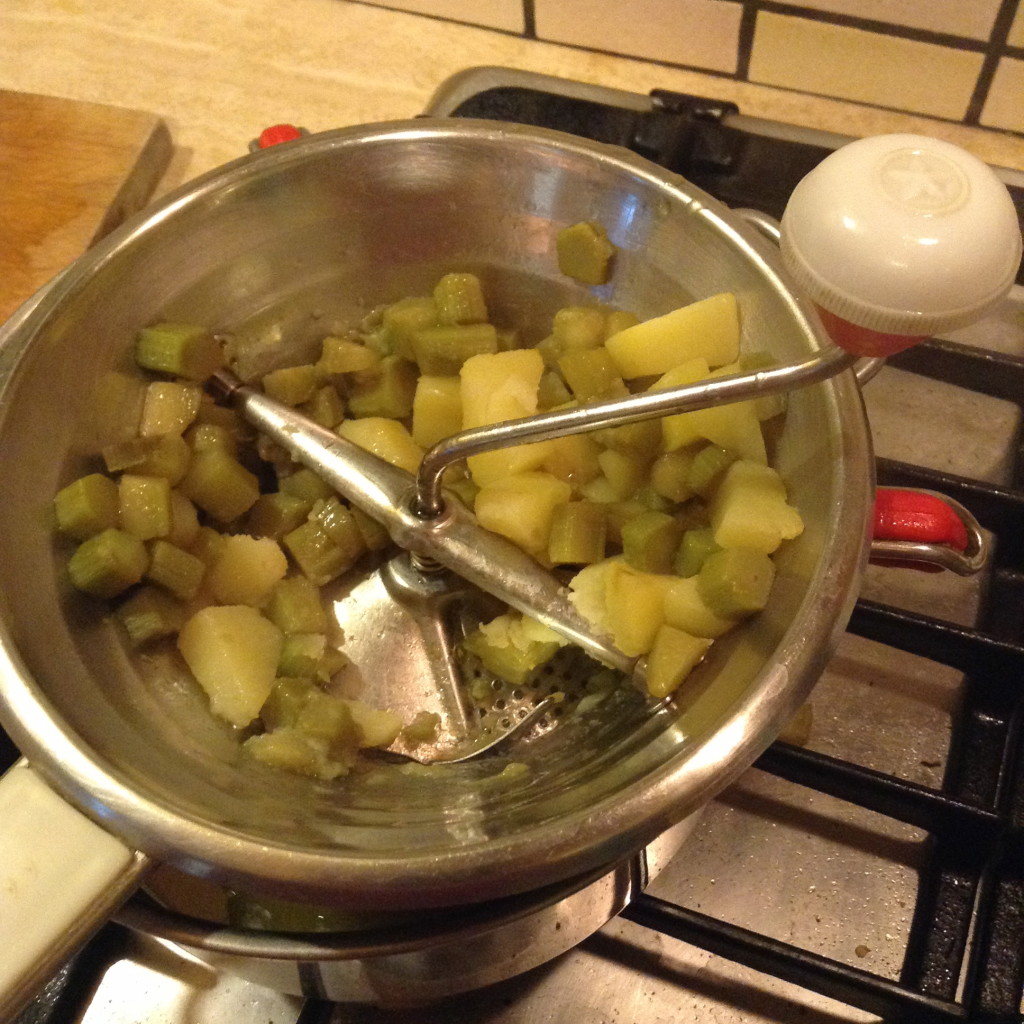

Very good advice Judy! I cringe every time I prepare artichokes! But will say that the ones you have at your “front door” are so much superior than what I can get here, even from my artichoke lady…it’s simply the climate and growing conditions. And the Violetta artichokes are gorgeous and I don’t think they have much choke, unlike the globe artichokes…nevertheless…we adore them and eat them just about every day when we are in Italy if they are available! All that said…I will be using the stalks!
Wow! Thanks for sharing this artichoke insight. I never knew that you could cook and eat the stems either. I’m definitely going to start cooking my artichokes this way so I don’t waste any. Aren’t you glad we have Google to use for recipes…it’s such a lifesaver!
What a gorgeous soup! I’ve never thought of making a soup with artichokes but now I will.
My grandmother taught me how to use radish stalks and artichokes stems. She was not Italian but had known the 2d worldwide war…
I’m so happy to see old recipes come back ! and I agree with you: Artichoke stems are gourmet artichokes parts : )
Fabulous!
I fix the stalks from the artichokes (carduni) boil them til tender and then dredge in flour with salt and pepper and fry in olive oil un til brown (both sides) layer in dish and sprinkle layers with parmesan cheese. Is the artichoke itself grown on the top of these stalks or in the middle of the stalk? Really confused. Love artichokes and carduni and when available here (which is around Thanksgiving and Christmas) look forward to dinner. Can you explain this plant to me and have any pictures to show these parts of the artichoke??? Thank you for your consideration and any information you have.
i am in USA right now– but will post some pictures of artchokes for you. There is one large artichoke at the top of the stem. Then smaller ones grow down below. These are what i call baby artichokes. if you follow me on FB— i was just in sicily and we did artichoke cutlets too. I am crazy about artichokes and lucky to live where they grow.
the carduni– cardoons- are not artichokes– but cousins. there are no “artichokes” on cqrdoons– in italy, there are small shoots of the artichoke plant that are sold as baby cardoons– where do you live?
Thank you so much for this recipe. I’ve been searching the internet for advice on how to cook the leaves of the artichoke plant because I am growing one in my yard and wondering if it is similar to the cardoons (carduni in Italian?) that used to sell at a produce store that I used to work at?? I don’t know if it’s the same plant or not… But I’m going to try using the leaves/stalks in the same way after harvesting the chokes.
you can cook the artichokes and the stalks– but not the “leaves”
The cardoons have a celery like stem– and you also don’t eat the leaves on those.
they are related… you can also treat the small shoots of the artichoke plant like a small cardoon.
I am interested in the actual plant. I know that the artichoke and stem are edible. Cardoon does shoot up an weird thistle as well but I only eat the stems and stalks of the plant, you know , Italian style. I have artichokes and cardoon this year and the cardoon plants have been amazing!! I also have beautiful artichoke plants. I have no idea if you can eat the entire plant of the artichoke………..they look exactly the same as cardoon……….Any help would be greatly appreciated!!
well the artichoke plant is stem, leaves and artichoke. never heard of anyone eating the leaves. The cardoon you remove the leaves, as they are not edible and eat the stalk which is more shaped like celery. no one eats the thistle. for the artichoke, the thick outer part of the stem is removed and the rest can be eaten.